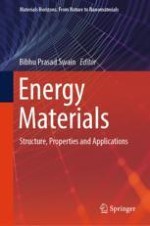Abstract
Fuel cells are devices that allow for the direct conversion of the enthalpy of combustion, or chemical energy, of fuels into electricity. A high ionic mobility suggests that the ions have relatively small ionic radii and just one charge. This is due to the fact that ions that have double or triple charges frequently display significant Coulomb interactions (O2− is an exception). Ions have to originate from one of the reactants, which might be either the fuel or the oxygen. This is another condition. Therefore, the ions H+, OH−, and O2− are necessary for fuel cells to function properly. There is often just one type of ion that can move about freely. This chapter will focus on protons since they are the most mobile charged particles. There is a connection between proton mobility and proton diffusion. Experimentally, proton diffusion cannot be measured by looking at macroscopic properties that depend on the concentration of protons because that would break the electro-neutrality condition. So, we cannot start from a situation that is not in equilibrium or from a difference in the chemical potential. However, it is conceivable for the electric field to have gradients. This indicates that the proton conductivity may be measured by the use of an electric field, and after that, the proton conductivity diffusion coefficient can be determined through the application of the Nernst-Einstein relation. The macroscopic proton conductivity is the most vital physical parameter that represents the efficient quality of the ceramic electrolyte. This is because macroscopic proton conductivity has an effect on how fuel cells are manufactured as well as how well they perform. However, from a more basic point of view, knowing merely the “proton conductivity” value at the macroscopic level is not sufficient. Additionally, one must have an understanding of how the proton can move about, how atoms can leap, and how molecules move on atomic sizes of space and time. Atoms or molecules on well-defined lattice sites are responsible for the series of site changes that make up solid-state diffusion. These site changes are referred to as “hops.” The nature of the lone event, or its underlying mechanism, is one component. How does an atom go from the lattice site it is now occupying to a site that is adjacent to it, and how does it do a site exchange? This is accomplished, in the case of a heavy atom, by a classical leap over the barrier that is produced by the interaction potential, which is triggered by heat. On the other hand, the interaction potential does not remain constant because of the vibrations of the lattice. Certain vibrational modes unlock the door between two locations, therefore reducing the possibility for a barrier in this direction to a far greater extent. Therefore, there is a significant connection between diffusion and the movement of the lattice (vibrates). Diffusion is a process that is governed by quantum mechanics and involves tunneling, often known as “hopping,” for light atoms, like the different forms of hydrogen. Numerous studies have been conducted, and researchers have come up with two primary explanations for the phenomenon of proton transfer. The first mechanism is known as the Grotthuss mechanism, while the second mechanism is known as the vehicle mechanism. The Grotthuss mechanism, which is also known as “structure diffusion,” has a step that causes the process to move more slowly than the others. This step is the diffusion of the structure, which refers to the pattern of hydrogen bonds. This step is brought about by the back-and-forth tunneling of the extra proton. During the process known as the vehicle mechanism, a proton and the water molecules that accompany it, also known as the “vehicle,” travel in huge quantities across a cation species.
